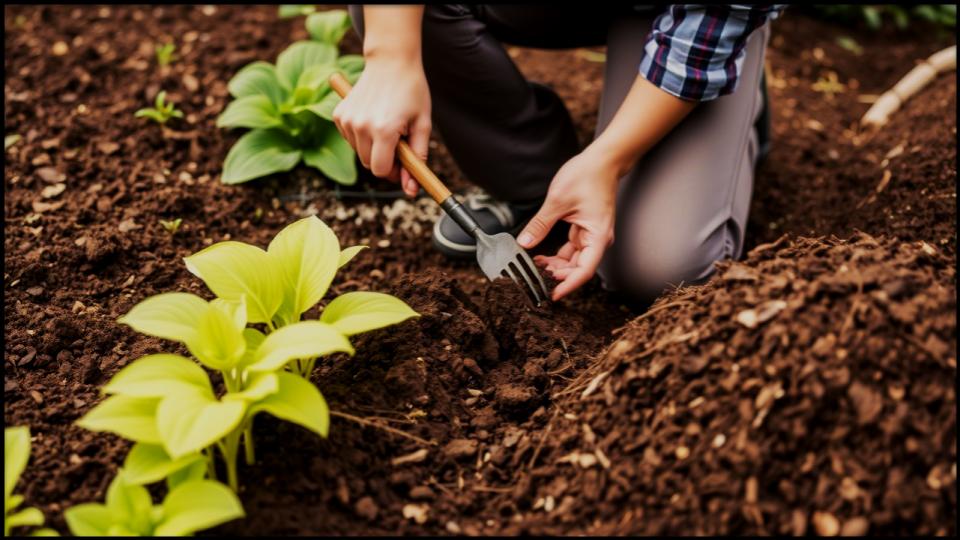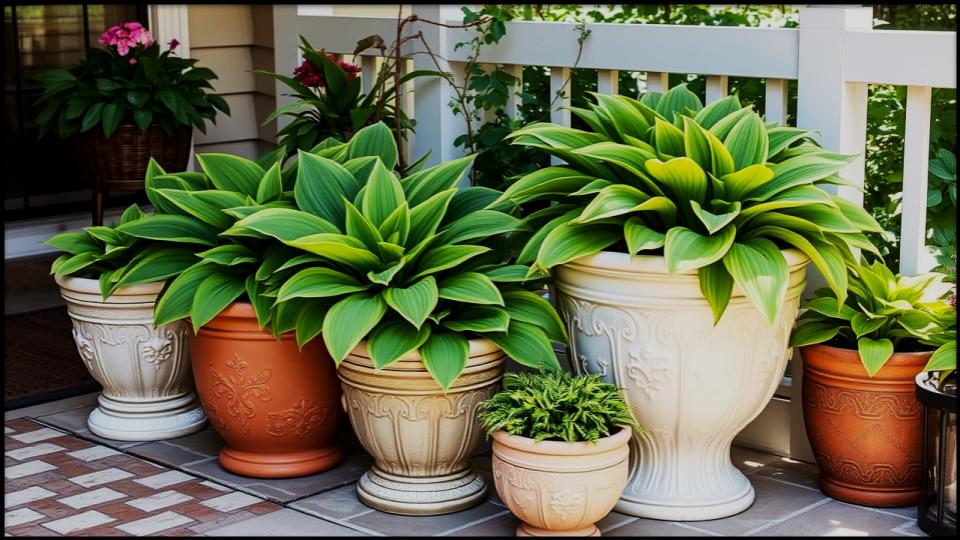
The allure of hostas, with their incredible diversity of foliage and graceful mien, is undeniable. For gardeners seeking to transform shady nooks into lush, vibrant havens, understanding the art of growing hostas is paramount. These shade-loving perennials, often hailed as the “queens of the shade garden,” offer an astounding palette of greens, blues, golds, and intricate variegations, alongside a fascinating array of textures from smooth and glossy to deeply puckered and ruffled. In my own garden, I’ve found that no other plant so effortlessly brings such consistent beauty and architectural interest to those challenging, less sunny spots. This guide will unravel the secrets to cultivating hostas that don’t just survive, but truly thrive, becoming the envy of your neighborhood. You’ll learn how to select the perfect varieties, master their care, and even harness their aesthetic power to create breathtaking garden designs.
Here’s what you need to know:
- Location is Key: Choose a spot with consistent shade or dappled light, especially avoiding harsh afternoon sun.
- Soil Matters: Ensure well-draining, organically rich soil for robust growth.
- Consistent Moisture: Hostas are thirsty; regular watering is crucial, particularly for newly planted specimens.
- Variety is the Spice: Explore the vast world of hosta varieties to find the perfect size, color, and texture for your design.
- Pest Patrol: Keep an eye out for slugs and snails, and employ organic controls if needed.
Why Growing Hostas Matters for the Shade Garden
Hostas are more than just pretty foliage; they are foundational plants for creating dynamic and resilient shade gardens. Their wide range of sizes, from miniature specimens perfect for containers to colossal giants that command attention, means there’s a hosta for every scale of garden. Beyond their visual appeal, hostas are remarkably low maintenance once established, offering a long season of interest from spring unfurling to late autumn. They suppress weeds, provide habitat for beneficial insects, and many even produce charming lavender or white flowers that attract hummingbirds. Growing hostas successfully transforms those often-neglected shaded areas into zones of tranquility and beauty, significantly enhancing your garden’s overall aesthetic and ecological balance.

Choosing the Right Hosta for Your Haven
Selecting the ideal hosta involves considering several factors: mature size, leaf color, texture, and your specific climate conditions. With thousands of registered cultivars, the choices can be exhilarating, if not a little overwhelming!
Size and Form
Hostas come in a spectrum of sizes:
- Miniature: Less than 6 inches in height and spread, perfect for rock gardens or fairy gardens (e.g., ‘Blue Mouse Ears’).
- Small: 6-12 inches (e.g., ‘Halcyon’).
- Medium: 12-18 inches (e.g., ‘Sum and Substance’).
- Large: 18-24 inches (e.g., ‘Empress Wu’).
- Giant: Over 24 inches (e.g., ‘Big Daddy’).
Consider the mature size and spread when planning your planting, ensuring ample space for each plant to reach its full potential without overcrowding.
A Kaleidoscope of Colors and Textures
The magic of hostas lies in their leaves. You’ll find:
- Blue Hostas: These varieties (e.g., ‘Halcyon’, ‘Blue Angel’) typically have a waxy coating that gives them their distinct blue hue. This coating is often most pronounced in more shaded conditions.
- Gold Hostas: Ranging from vibrant chartreuse to deep gold (e.g., ‘Sum and Substance’, ‘August Moon’). These generally tolerate more sun, which intensifies their golden color.
- Green Hostas: The classic, in shades from emerald to lime (e.g., ‘Guacamole’, ‘Plantaginea’).
- Variegated Hostas: The showstoppers, with combinations of green, gold, white, or cream in various patterns (e.g., ‘Patriot’, ‘Frances Williams’). The variegation patterns can be incredibly diverse, from margins to centers, and speckled to streaked.
Leaf textures also vary widely: from smooth and glossy to heavily corrugated, rippled, or even puckered (seer suckered). A common mistake I see gardeners make is not considering texture – mixing contrasting textures adds immense visual interest to a hosta planting.
The Art of Planting: A Step-by-Step Guide
Proper planting is crucial for the long-term success of your hostas. This isn’t just about digging a hole; it’s about preparing a welcoming home for your plant.
- Site Selection: Hostas generally prefer full to partial shade. While some gold and yellow varieties can tolerate more sun, particularly morning sun, most blues and variegated types will scorch in hot afternoon sun. Blue hostas, in particular, will lose their distinct blue coloration in too much light, as the waxy coating that gives them their color can melt away. A well-drained location is non-negotiable. Hostas despise “wet feet” and will quickly rot in waterlogged soil.
- Soil Preparation: Hostas thrive in rich, well-draining soil. If you have heavy clay or very sandy soil, amend it generously with organic matter. I incorporate a healthy amount of compost, well-rotted leaf mold, or aged manure into my planting beds annually. This improves drainage in clay soils and enhances water retention in sandy soils, while also providing essential nutrients. The ideal pH for hostas is slightly acidic to neutral, between 6.0 and 7.0.

Planting the Hosta:
- Dig a hole twice as wide as the hosta’s root ball and just as deep.
- Gently remove the hosta from its nursery pot. If the roots are tightly circling, gently loosen them with your fingers.
- Place the hosta in the center of the hole, ensuring the crown (where the roots meet the stems) is level with or slightly above the surrounding soil.
- Backfill the hole with your amended soil, gently tamping down to remove air pockets.
- Water thoroughly immediately after planting to settle the soil around the roots.
Hosta Plant Care: Nurturing Your Foliage Favorites
Consistent care is the bedrock of vibrant, healthy hostas. Think of it as a gentle partnership between gardener and plant.
Watering
Hostas are thirsty plants, especially during dry spells and in their first year of establishment. Provide deep, consistent watering, aiming to keep the soil evenly moist but not waterlogged. Early morning watering is ideal, allowing the foliage to dry before evening to deter fungal issues.
Fertilizing
If your soil is well-amended with organic matter, heavy fertilization might not be necessary. However, a balanced granular fertilizer (e.g., 10-10-10) applied in early spring as new growth emerges can give them a boost. Avoid fertilizing late in the season, as this can encourage tender new growth that is vulnerable to frost.
Pest and Disease Management
The primary pest for hosta plant care is slugs and snails. These nocturnal feeders can decimate hosta leaves, leaving behind tell-tale holes and slime trails. My go-to method for slug control involves a multi-pronged approach:
- Morning Patrol: Hand-picking slugs in the early morning or evening.
- Beer Traps: Shallow dishes filled with beer sunk to soil level.
- Diatomaceous Earth: Sprinkled around the base of plants (reapply after rain).
- Less Toxic Baits: Iron phosphate-based baits are effective and safer for pets and wildlife than metaldehyde baits.
Deer also find hostas quite palatable. If deer are a persistent problem in your area, consider planting deer-resistant varieties (though none are truly deer-proof) or employing repellents or fencing.
Fungal diseases like crown rot can occur in overly wet conditions. Ensuring good drainage and avoiding overhead watering can help prevent these issues.
Seasonal Considerations for Thriving Hostas
Hostas are remarkably resilient, but a little seasonal attention ensures they remain spectacular year after year.
Spring: The Awakening
As temperatures rise, watch for the “pips” – the emerging shoots – pushing through the soil. This is the ideal time to apply a balanced fertilizer and to divide overcrowded clumps if desired. This also marks the start of your slug patrol!
Summer: Lush Growth
This is the season of peak beauty for hostas. Ensure consistent watering, especially during hot, dry spells. Deadhead spent flower stalks if you don’t wish to collect seeds or if you find them unsightly; otherwise, leave them for a bit of late-season interest.
Autumn: Preparing for Slumber
As temperatures cool, hosta foliage begins to yellow and eventually collapse. This is a natural process. You can cut back the yellowing foliage in late autumn or early winter, or leave it to provide a bit of winter insulation and habitat for beneficial insects. Clearing away old foliage can also help reduce overwintering sites for slugs.
Winter: Rest and Rejuvenation
Hostas are herbaceous perennials, meaning their foliage dies back to the ground in winter. They require a period of cold dormancy. A layer of mulch can help protect newly planted hostas from frost heave in colder climates, but generally, established hostas are quite cold-hardy.
Styling Your Garden with Hostas: Beyond the Bed
Hostas are incredibly versatile and can be used in a myriad of ways to elevate your garden design. Don’t limit them to just the shade border!
- Containers: Many hosta varieties, especially the smaller and miniature ones, thrive in pots. This allows you to move them to different locations as light conditions change or to bring them closer to a patio or deck for admiration. Imagine a collection of variegated hostas in elegant terracotta pots, their foliage spilling gracefully over the edges.
- Groundcover: Densely planted hostas can form a beautiful, weed-suppressing groundcover under trees or in large shaded areas. ‘Guacamole’ or ‘Francee’ are excellent choices for this purpose due to their vigorous growth.
- Underplanting: They make superb underplantings for taller shade-loving shrubs and trees like rhododendrons, azaleas, or hydrangeas. Their broad leaves provide a wonderful textural contrast to the finer foliage of many shrubs.
- Edging: Use medium-sized hostas as a striking border along pathways or garden beds. The crisp lines of their foliage can define spaces beautifully.

The journey of growing hostas is a rewarding one, transforming often-challenging shaded areas into verdant tapestries of texture and color. By understanding their basic needs – dappled light, rich, well-draining soil, and consistent moisture – you can cultivate robust and beautiful specimens that return year after year. From the majestic sweep of a ‘Sum and Substance’ to the delicate charm of ‘Blue Mouse Ears,’ hostas offer an unparalleled opportunity to express your creativity and create a garden space that is both sophisticated and wonderfully serene. So, embrace the shade, delve into the delightful world of hostas, and watch your garden truly thrive.
Read More
These 15 Garden Water Features Will Make You Fall in Love with Your Garden Again
